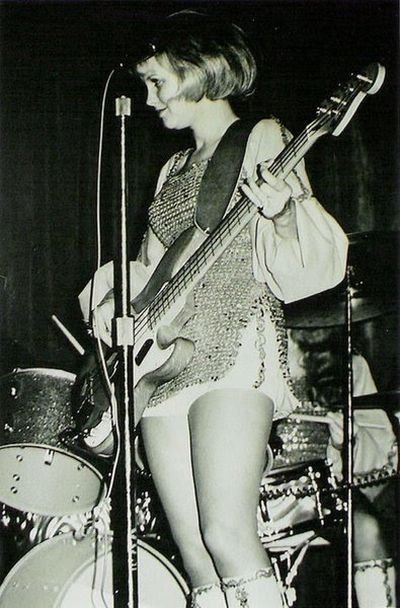|
|
History: All-female Bands
|
While the 1980s helped pave the way for female musicians to get taken more seriously it was still considered a novelty of sorts for several years, and it was very much a male-dominated world. In 1984 when film maker Dave Markey, along with Jeff and Steve McDonald from Redd Kross, put together the mocumentary Desperate Teenage Lovedolls, a comically punky version of Beyond the Valley of the Dolls, it also spawned a real band. While the Lovedolls could barely play at first, because of the film, and because they were an "all-female band", they received press and gigs.
Klymaxx became the first all-female band in the R&B style of music to all play an instrument; several of their singles have charted successfully in both R&B and pop countdowns.
Leading into the 1990s the surge of Heavy Metal in the 1980s helped to shed another light on the role of females in music. Because of the success of The Go-Go's and The Bangles many females were frustrated at not being taken seriously or only thought of as "cute chicks playing music" and either joined rock bands or formed all-female metal bands. One such band that was playing harder music in San Francisco was Rude Girl. Originally signed to CBS records the band splintered before an album would be released and the remaining members released a 12-inch single in 1987 under the name Malibu Barbi. When Cara Crash and Wanda Day left 4 Non Blondes and joined the band their sound shifted from heavy metal to a sound described as combining a "driving beat with Johnny Rottenesque vocal and post-punk riffs". Around the same time in the Midwest, Madam X was signed to an offshoot of Columbia Records, Jet Records. In 1984 the Rick Derringer-produced album We Reserve The Right was released along with the single "High in High School". The Petrucci sisters were a focal point of the band – Max, the lead guitarist, and Roxy, the drummer. However, based on management decisions, it was decided that it would be better if only one of the sisters were in the band and Roxy was placed in another band, the all-female, Los Angeles based Vixen.
With the resurgence of interest in pop-punk bands in the US in the early 1990s, along with the sunset strip 'hair metal' scene becoming extremely crowded, bands who combined a "non-image" with loud raw music started were gigging at clubs like Rajis in Hollywood. Bands such as Hole, Super Heroines, The Lovedolls and L7 became popular, while demonstrating on stage, and in interviews, a self-confident "bad girl" attitude at times, always willing to challenge assumptions about how an all-female band should behave. Courtney Love described the other females in Hole as using a more "lunar viewpoint" in their roles as musicians. In the 1990s, Riot Grrrl became the genre associated with bands such as Bratmobile and Bikini Kill. Other punk bands, such as Spitboy, have been less comfortable with the childhood-centered issues of much of the Riot Grrrl aesthetic, but nonetheless also have dealt explicitly with feminist and related issues. All-female Queercore bands, such as Tribe 8 and Team Dresch, also write songs dealing with matters specific to women and their position in society. A film put together by a San Diego psychiatrist, Dr. Lisa Rose Apramian, along with the former drummer from The Motels and The Droogs, Kyle C. Kyle, the documentary Not Bad For a Girl explored some of these issues with interviews from many of the female musicians on the Riot Grrrl scene at the time.
|
|









